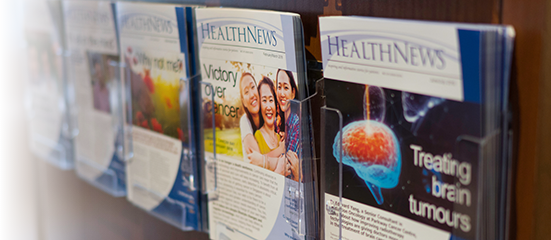News & Articles

Sunscreen: Beauty Tool or Health Product?

Is sunscreen merely a beauty tool, or does it have value for our health? Dr Richard Quek, Senior Consultant, Medical Oncology explains the health benefits of sunscreen and its role in reducing the risk of skin cancer.
In the cosmetics industry, sunscreen has long been touted as a way to stave off the effects of photoaging.
However, sunscreen is more than just a beauty tool; the benefits of sunscreen extend beyond preventing wrinkles, age spots and dryness. In fact, it is an important protective measure against damaging ultraviolet (UV) radiation from the sun, and a means of skin cancer prevention.
Unfortunately, a majority of the Singapore population do not take enough precautions against harmful UV radiation. According to a recent study by the National University of Singapore and National Skin Centre, only 23.9% of Singapore residents say they use sunscreen 1.
This worrying number may be attributed to a lack of awareness about the damaging effects of sun exposure. Understanding the risks associated with harmful UV radiation and the health benefits of sunscreen can therefore go a long way in encouraging more individuals to adopt sun safety habits in their daily lives.
What is sunscreen?
Sunscreen, also known as sunblock or sun lotion, is a photoprotective topical product that reflects, absorbs and scatters harmful UV radiation from the sun as a protective measure against both types of radiation. Applying sunscreen or products that contain sunscreen can help protect the skin from the effects of sun damage, such as sunburn, photoaging and skin cancer.
Sunscreen was first invented in Australia in 1932 by chemist H.A. Milton Blake. However, early civilisations as far back as 4,000 BC have been known to use a variety of products, from olive oil to rice extracts, spices, and weeds, to protect the skin from sun damage 2 .
Today, sunscreen comes in a variety of convenient formats that can be rubbed, sprayed or layered on. Sheer sunscreen with a light, non - sticky formula offers a more comfortable solution for individuals who fear stickiness or discomfort, while water resistant sunscreen that can withstand sweat are useful for individuals living in humid climates. Meanwhile, 2-in-1 moisturisers and foundations that include sunscreen have made it simpler and time - saving for individuals to practise sun safety habits without compromising on effectiveness.
Risks associated with harmful UV radiation
Not applying sunscreen exposes your skin to harmful UV radiation.
Short-term overexposure to UV radiation can result in sunburn. Sunburn is inflamed skin that feels hot and painful to the touch. The skin may itch, flake or peel away after a few days. Fortunately, symptoms of sunburn can generally be managed by reducing inflammation and rehydrating your skin.
Prolonged overexposure to UV radiation, however, can lead to serious health issues, such as skin cancer.
Most skin cancers develop on sun-exposed areas of the body 3. They may also develop in areas of the body that are not exposed to the sun, such as the genitals.
Skin cancer can be broadly classified into two main types: melanoma and non-melanoma skin cancer (NMSC). The most common subtypes of skin cancer in Singapore include NMSCs such as basal cell carcinoma and squamous cell carcinoma, as well as cutaneous melanoma 4 . They currently make up the sixth and seventh most common cancer in Singaporean men and women respectively 5 .
Anyone can be exposed to the harmful effects of UV radiation. However, the risk of skin cancer increases in people who:
- Have a family and personal history of skin cancer
- Are older in age
- Possess certain rare inherited conditions
- Have prolonged exposure to UV radiation
- Have lighter skin colour
- Experience recurrent episodes of sunburn
The good news is that most types of skin cancer are highly treatable when detected early. Other symptoms associated with overexposure to UV radiation are also highly preventable.
Practising sun safety habits
Although your skin has innate defense mechanisms, it is not enough to prevent the damage caused by harmful UV radiation. A so-called 'healthy tan' is actually a sign of sun damage. Additional protection is therefore essential to prevent sun damage penetrating into the deeper layers of your skin.
Applying sunscreen is one of the most effective precautions you can take to reduce the risks associated with harmful UV radiation, including skin cancer.
Sun Protection Factor (SPF) is an index used to indicate the degree of protection from UVB radiation, a type of UV radiation that is more likely to cause sunburn. A higher SPF index indicates longer duration of protection. In Singapore, sunscreens with a minimum of SPF 30 or higher are recommended to maintain protection against UV radiation 6
Taking steps to protect yourself from sun exposure is a year-round responsibility. Here are a few sun safety habits you can adopt into your daily routine:
- Use sunscreen with SPF 30 or higher and reapply as and when required. Sunscreen should be used even on cloudy or overcast days as UV radiation can pass through clouds
- Wear adequate sun protection clothing e.g. hat, sunglasses, covered shoes
- Stay in the shade or use an umbrella, especially during midday
With just a few simple steps every day, you can protect yourself from sun damage and reduce your risk of skin cancer.
1 “Local survey: Sun safety habits not widely practised in Singapore”, 2020, sph.nus.edu.sg/2020/03/local-survey-sun-safety-habits-not-widely-practised-in-singapore
2 Nadim S (2005). "Sunscreen Evolution". In Shaath N (ed.). Sunscreens : regulations and commercial development (3 ed.). Boca Raton, Fl.: Taylor & Francis.
3 NCI Dictionary of Cancer Terms, 2023
4 National University Cancer Institute Singapore, 2023 ncis.com.sg/Cancer-Information/About-Cancer/Pages/Skin-Cancer.aspx
5 Singapore Cancer Registry Annual Report 2020
6 “Sunscreens”, 2023, healthhub.sg/a-z/medications/471/Sunscreens
| POSTED IN | Cancer Prevention |
| TAGS | prevent cancer, skin cancer |
| READ MORE ABOUT | Melanoma |
| PUBLISHED | 01 May 2023 |
